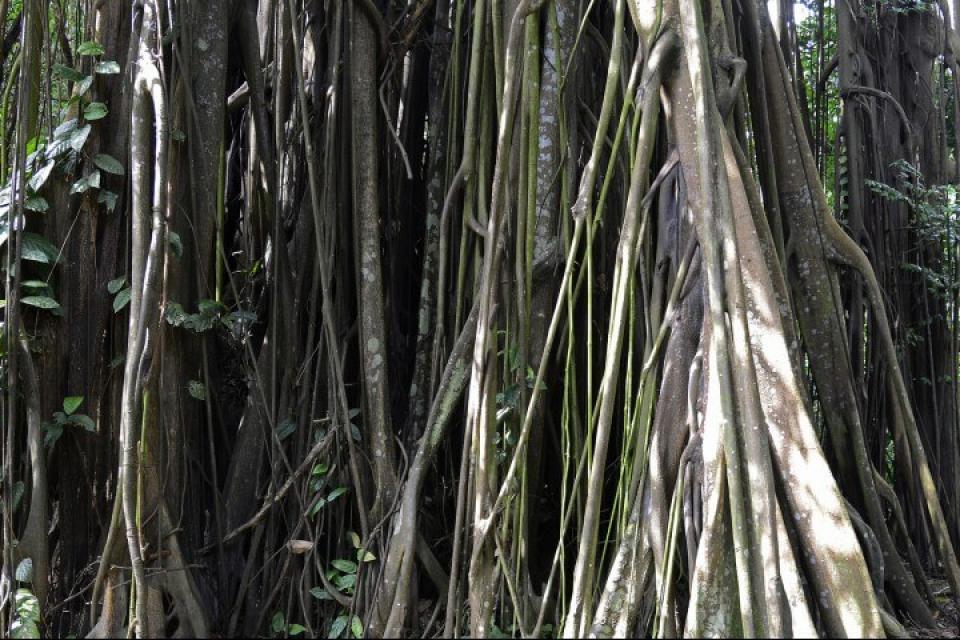Image Credit: Botanical Garden - Strangler Fig, January 2014, © Gerhard Huber
What would you do if you see a murderer at work, slowly strangulating his victim to death? How would you feel if you are the victim, sentenced to a slow death via a Python’s Hug?
Meet a fellow murderer in the wilds of Singapore, aka Strangler Fig. A Strangler Fig can be from various species of figs including Benjamin Fig, Bodhi Fig, Banyan Fig etc. They are so-named for their pattern of growth upon host trees, which often results in the eventual host’s death.
Strangler figs are common in tropical forests throughout the world including Singapore & Malaysia. Although a strangler fig often smothers and outcompetes its host, there is some evidence that trees encased by strangler figs are also more likely to survive tropical storms suggesting that the relationship can be somewhat beneficial for both.
A strangler fig typically starts life in the canopy of its host tree. Beginning life as a sticky seed left on a high tree branch by animals such as birds, bats or monkeys, the young strangler lives as an epiphyte on the tree’s surface. Epiphytes are a category of plants that can gain nutrients from the air and rain exclusively.
As it grows, long roots develop and descend along the trunk of the host tree, eventually reaching the ground and entering the soil. Several roots usually do this, and they become grafted together, enclosing their host’s trunk in a strangling latticework, ultimately creating a nearly complete sheath around the trunk.
The host tree’s canopy becomes shaded by the thick fig foliage hence depriving it of the sun. The host’s trunk is slowly but surely constricted by the surrounding fig root sheath, and its own root system forced to compete with that of the strangler fig. This death sentence is usually a long and excruciating process for the host, sometimes lasting for hundreds of years.
As the strangling fig slowly consumes all of the available resources available, the host weakens and eventually becomes a shadow of itself and then dies. If it does not, the host tree, being much older than the strangler, eventually too will die and rots away leaving behind a magnificent fig "tree" whose apparent "trunk" is actually a gigantic cylinder of roots.
Some stranglers like the Weeping Fig (Ficus Benjamin’s) develop aerial roots from their branches and send them straight down through the air. When they reach the ground, these roots grow into the soil, thicken, and become additional "trunks." In this way stranglers can also grow outward to become large patches of Fig forests that actually consist of a single plant with many interconnected trunks.
Strangler figs are ecologically important in many tropical forests. The hollow centres of strangler figs are full of spaces that provide shelter and breeding sites for bats, birds and various animals. Perhaps more importantly, many stranglers are considered ‘keystone species’ in that they provide food to a wide variety of animals during times of scarcity in the forest.
Strangler Figs are also believed to be home to a motley mix of supernatural creatures. Diverse cultures around the world believe that these trees shelter angels & fairies, gods & ancestral spirits, ghosts, and other malevolent creatures. In the folklore of Philippines, these include giant tree demons called kapres, goblin-like duendes, and the half-human, half-horse tikbalang. It is not unusual in Singapore to see people put figurine of various deities and set up small altars near old fig trees.
Share with me where your favourite strangler in Singapore is located ?











